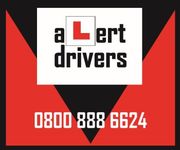Session 7. Demonstrations
Demonstration is probably one of the most valuable tools in the driving instructor's tool box, but at the same time, one that is vastly under-used. Despite the value, some instructors don’t use demonstration at all!
The reason that demonstration is not used as much as it might be is probably because in the past it was rarely taught as part of the ADI syllabus. During the “old” part 3 and Standards Check system based on role-play, examiners used to reject any offer of demonstration therefore trainers did not teach it.
Now that the exam has changed and if there is the opportunity and or requirement for ADI's to use demonstration during their standards check then they should – but it is essential that it’s not seen as a ‘time-filler’, only as part a normal lesson under the same conditions.
Demonstration during a lesson can be very specific, for example when teaching a manoeuvre or routine approach to any given hazard, or more general, for example when the driving instructor drives from the test centre to the training location on the first few lessons with a new student, or relocates during a lesson to remain focussed on the student's training goal. Whatever the situation, the demonstration must have a clear purpose, be pitched at an appropriate level and be delivered in a way that the learner can easily relate to.
When using demonstration as a teaching aid, it is essential to ensure that your actions are pitched at a suitable level for the student driver.
Student drivers will gain little from an ‘expert’ standard demonstration if the level of competence required to achieve the task is beyond their ability. A demonstration done in this way might discourage your students from attempting a task they perceive to be too difficult.
Example:
If you were to demonstrate a complex Junction, possibly a yellow box junction with a complicated road layout, at a stage when the learner driver is still getting to grips with the correct position for the vehicle when waiting to turn right from a major to minor road. There would possibly be too much going on for the learner driver to full grasp the correct information. This would encourage the learner driver to fail and therefore make them feel that they just cannot do this practice and it may become a barrier to their learning.
Demonstrations are not about how well you can do something; they must be geared to the student driver's needs.
The key learning points for this session are that demonstrations:
- Can be used for any subject.
- Can be an alternative way to deliver a briefing.
- Must be pitched at an appropriate level.
- Must be done in such a way that the skills being demonstrated are clear.
- Can be delivered in a number of different ways.
Using demonstration during your lessons can be extremely valuable for several reasons:
- It allows your student driver to gain a clear idea of the task that they are about to perform.
- It breaks up the lesson by giving a change of activity.
- It gives a physical break. Getting out of the car stretches the muscles and the fresh air is revitalising.
- It can help pupils to see exactly how they made mistakes. (Be careful with this one. Make sure that you keep the car safe when repeating the mistake.)
- It can allow the student to talk through your actions and work as an aid to revision.
- It can introduce a student to an area of learning they may consider tricky, such as joining a busy roundabout. Allowing them time to think about opportunities to join without the actual pressure of driving or making mistakes.
Think back to how you have developed as an adult or in job roles that you have had. How many times has demonstration been of benefit to you, from making a bed to something more complicated such as possibly stripping down and cleaning a rifle (for the military minded of us).
In normal everyday life we pass on physical skills and abilities to others form teaching siblings, nieces and nephews, children and grand children new skills to helping new co-workers master aspects of a job role to ensure everything goes smoothly. More often or not demonstration would pay a large part in this sharing of ability and development.
Here I would like you to think of 6 examples of where you have experienced demonstration in your life.
3 examples of where you have received demonstration and 3 examples of where you have used demonstration to help someone else.
Demonstrations Workshop TBC

